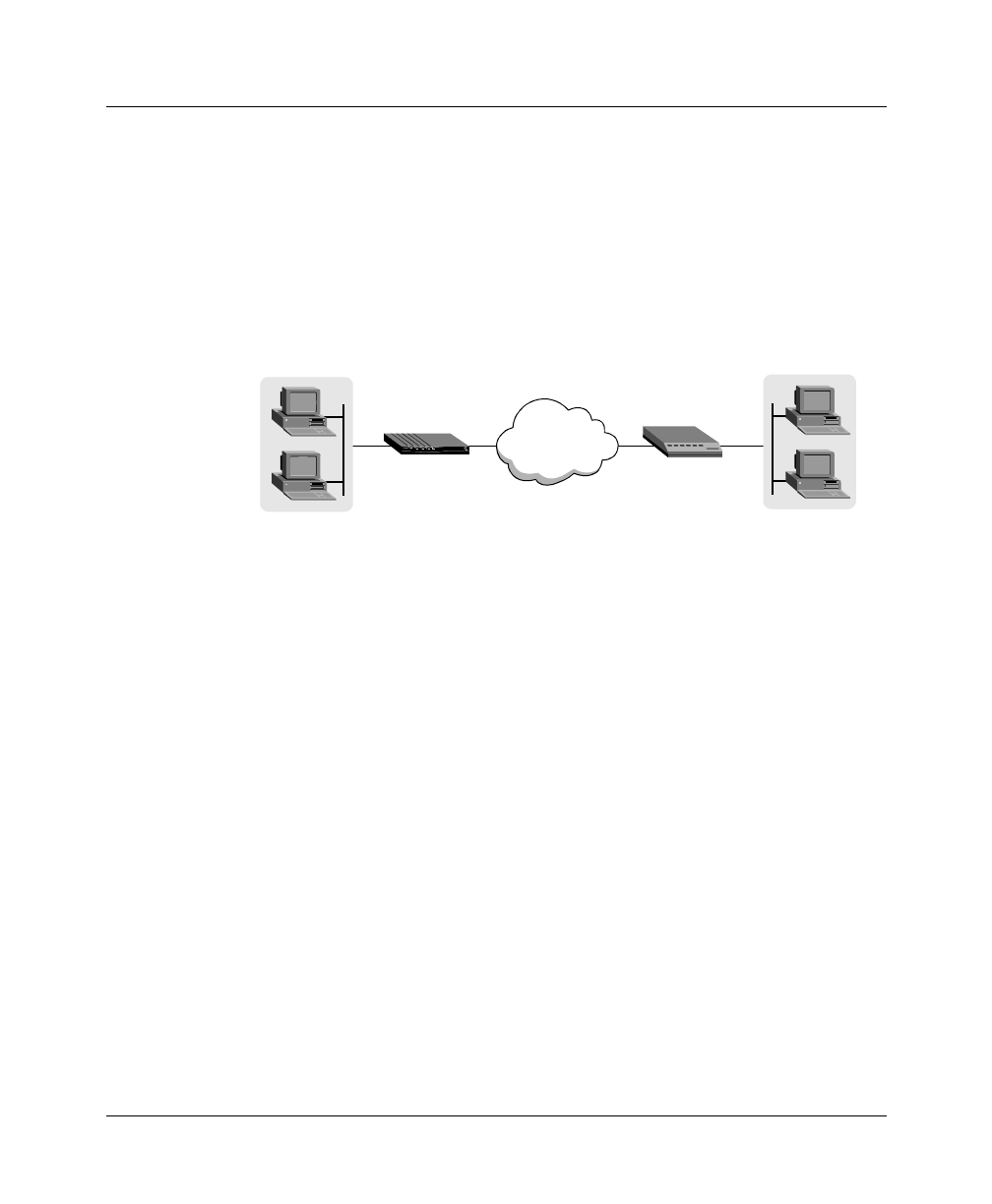User`s guide
Table Of Contents
- Ascend Customer Service
- How to use this guide
- What you should know
- Documentation conventions
- How to use the on-board software
- Manual set
- Configuring WAN Connections
- Configuring IP Routing
- Introduction to IP routing on the Pipeline
- Managing the routing table
- Parameters that affect the routing table
- Static and dynamic routes
- Configuring static routes
- Specifying default routes on a per-user basis
- Enabling the Pipeline to use dynamic routing
- Route preferences
- Viewing the routing table
- Fields in the routing table
- Removing down routes to a host
- Identifying Temporary routes in the routing table
- Configuring IP routing connections
- Ascend Tunnel Management Protocol (ATMP)
- IP Address Management
- Connecting to a local IP network
- BOOTP Relay
- DHCP services
- Dial-in user DNS server assignments
- Local DNS host address table
- Network Address Translation (NAT) for a LAN
- Configuring IPX Routing
- How the Pipeline performs IPX routing
- Adding the Pipeline to the local IPX network
- Working with the RIP and SAP tables
- Configuring IPX routing connections
- Configuring the Pipeline as a Bridge
- Defining Filters and Firewalls
- Setting Up Pipeline Security
- Pipeline System Administration
- Pipeline 75 Voice Features
- IDSL Implementations
- APP Server utility
- About the APP Server utility
- APP Server installation and setup
- Configuring the Pipeline to use the APP server
- Using App Server with Axent SecureNet
- Creating banner text for the password prompt
- Installing and using the UNIX APP Server
- Installing and using the APP Server utility for DO...
- Installing and using the APP Server utility for Wi...
- Installing APP Server on a Macintosh
- Troubleshooting
- Upgrading system software
- What you need to upgrade system software
- Displaying the software load name
- The upgrade procedure
- Untitled

Configuring IP Routing
Introduction to IP routing on the Pipeline
Pipeline User’s Guide Preliminary January 30, 1998 2-3
interfaces. If the Pipeline is configured for RIP, it also broadcasts its updated
routing table to other hosts.
Router-to-router connections
When the device connecting to the Pipeline is an IP router that belongs to an IP
network, the connection results in a route to that remote network (or subnet). For
example, Figure 2-1 shows a Pipeline connected to a remote router. The two
Ethernet segments are separate IP networks.
Figure 2-1. An IP routing connection between two networks
If a user (attached to the Pipeline) launches a Telnet session and enters an address
at a remote site (such as one on the other side of the CPE router), the remote
router receives the outbound TCP/IP packets and consults its routing table. If it
does not find a route to the target site, it either forwards the packets to its default
router or drops them, depending on how it is configured. If it finds a route to the
target site, it opens the appropriate profile and dials out.
When receiving a call, the Pipeline checks its Answer profile to verify that it can
accept incoming IP routing calls. Then it does the following:
• If the Answer profile does not have IP routing on, the Pipeline ends the call.
• If the Answer profile does have IP routing on, the Pipeline looks for a profile
that matches the IP address offered during PPP negotiation.
• If the Pipeline doesn’t find a matching Connection profile, it ends the call.
• If the Pipeline finds a matching profile, it authenticates the connection.
After a connection is established, the Pipeline adds a network route to its routing
table and begins functioning as an IP router between its local and WAN interface.
If the Pipeline is configured for RIP, it also broadcasts its updated routing table to
other hosts.
WAN
CPE Router
IP Adrs=10.9.8.15/29
IP Adrs=10.2.3.1/22










